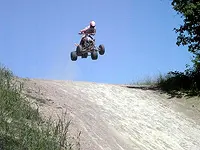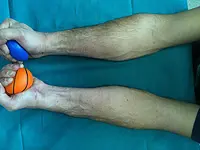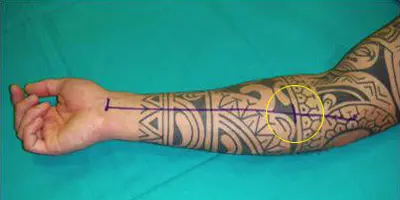Chronic excertional compartment syndrome
What it is:
It is that condition that during competion or training leads to a muscle mass increase (fig.2) that leads to a sudden stop of the activity. Usually patients refer numbness, loss of strenght, heavy weight sensation at the forearm It affects mainly motoracers (fig.1), but rawers and tennis players can be affected as well. The diagnosis is mainly clinical from the history of the patient: routine examinations, such as elettromiography are negative at rest. Measurement of compartment pressure with special instruments could be usefull.
 Fig. 1
Fig. 1 Fig. 2
Fig. 2Treatment:
the conservative treatment is often unsuccesfull. The best treatment is to perform the so called fasciectomy, that consists in the release of the fascia that surrounds the muscles.: nowadays through a small incision (fig.3) at the level of the forearm this technique can be performed also endoscopically allowing immediate mobilization (video 1) and faster return to competion in few weeks. Mandatory is the postoperative physical therapy.
 Fig. 3
Fig. 3
